
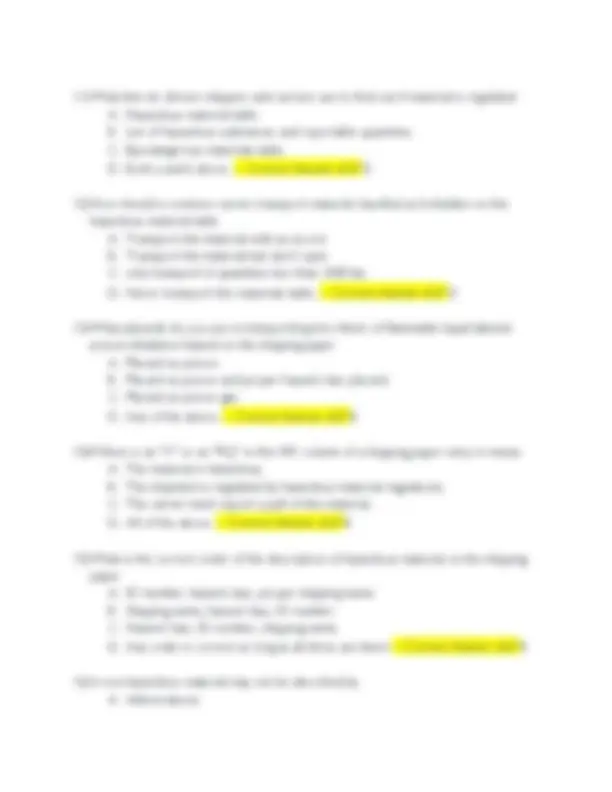
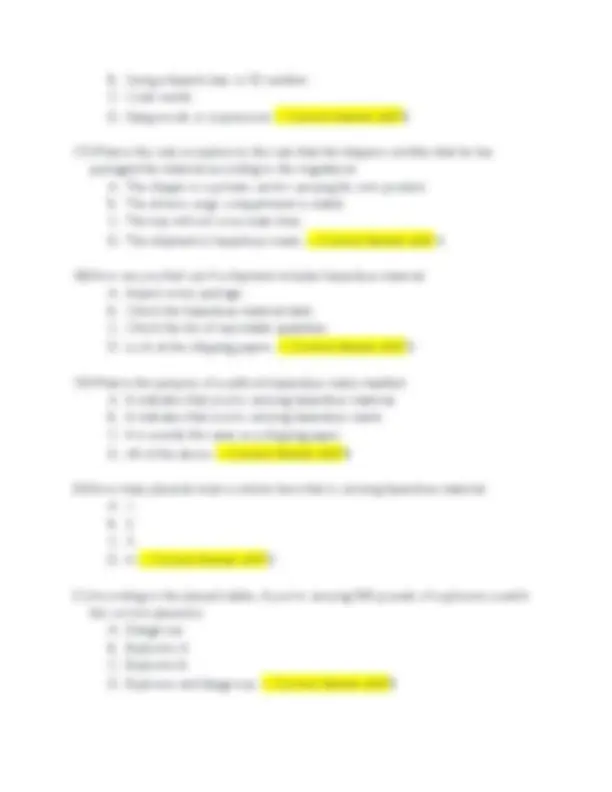
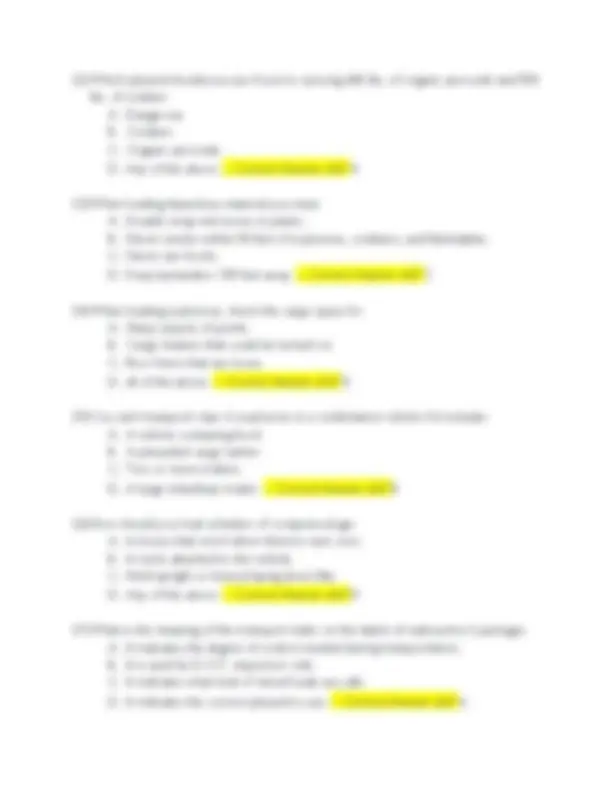
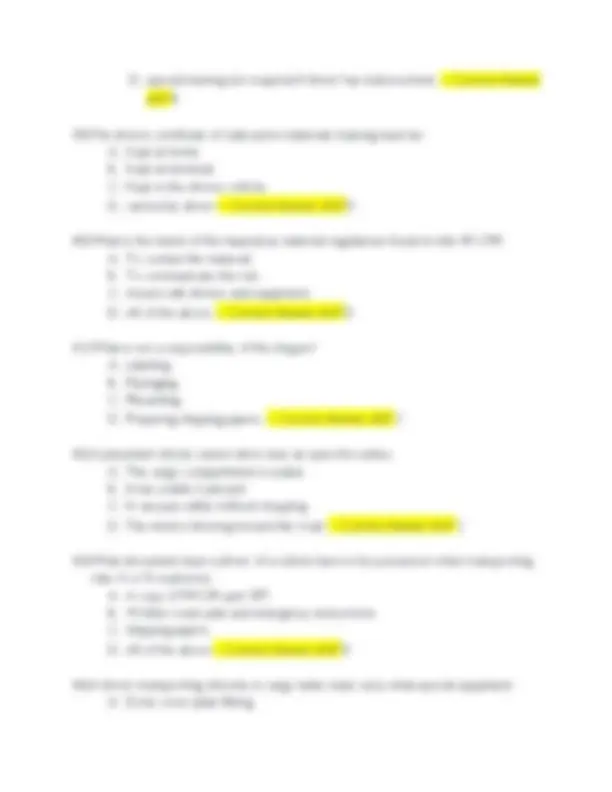
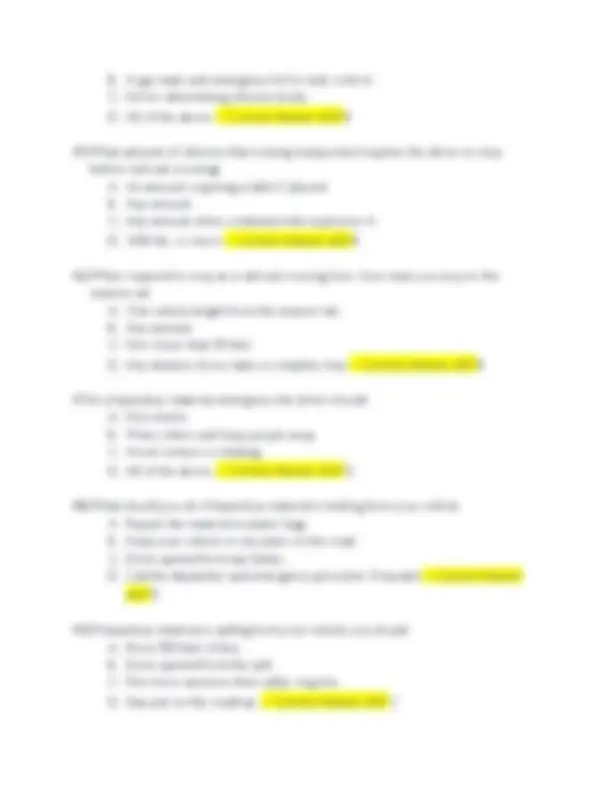



Study with the several resources on Docsity

Earn points by helping other students or get them with a premium plan


Prepare for your exams
Study with the several resources on Docsity

Earn points to download
Earn points by helping other students or get them with a premium plan
Community
Ask the community for help and clear up your study doubts
Discover the best universities in your country according to Docsity users
Free resources
Download our free guides on studying techniques, anxiety management strategies, and thesis advice from Docsity tutors
A series of multiple-choice questions and answers related to the hazardous materials (hazmat) regulations for commercial driver's license (cdl) holders. It covers essential topics such as placarding, shipping papers, loading procedures, and emergency response. The questions are designed to test knowledge of hazmat regulations and safe handling practices.
Typology: Exams
1 / 10

This page cannot be seen from the preview
Don't miss anything!







C. Every 2 hours or 100 miles. Whichever is less D. Using a tire pressure gauge or tire iron. -- Correct Answer ✔✔ C
B. Using a hazard class or ID number. C. Code wards. D. Slang words or expressions -- Correct Answer ✔✔ B
C. Know what to do in an emergency. D. All of the above. -- Correct Answer ✔✔ D
D. special training not required if driver has endorsement. -- Correct Answer ✔✔ B